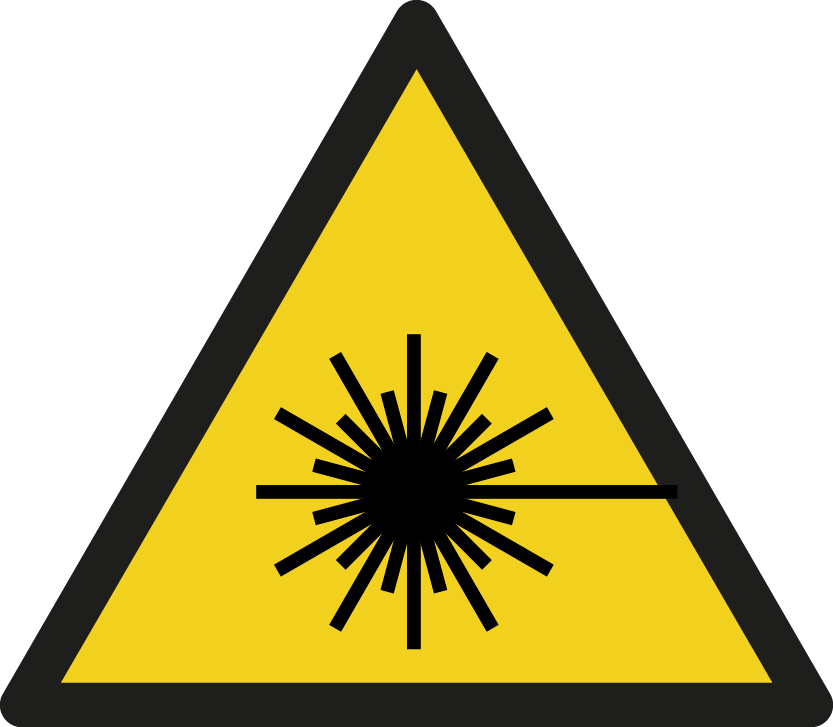Non-Ionizing Radiation
Laser Protection
Improper handling of lasers can cause permanent eye and skin damage.
Every laser in Switzerland must be assigned to a specific laser class (1-4). The laser class describes the hazard potential of a laser, from which in turn the necessary protective measures can be derived.
Class 1 lasers pose no hazard under reasonably foreseeable operating conditions; also using optical aids such as microscopes.
Class 2 lasers emit solely radiation in the visible region of the spectrum (400 nm to 700 nm). In the case of a short-term exposure of less than 0.25 s, no damage to the eye must be expected.
Class 3R lasers can damage the eye.
Class 3B and 4 Lasers are dangerous when looking directly into the beam and can cause eye damage (even by brief accidental exposures). Direct irradiation as we l as reflections endanger the eye and skin to a great extent. Class 4 lasers often also pose a fire hazard. Class 3B and 4 lasers must be completely shielded and accommodated in a housing, so that no radiation is emitted to the outside.

Electromagnetic Fields
In accessible areas with high electric or magnetic field strength a risk assessment is required.

